- Average Rating:
- Not yet rated
- Topic Areas:
- Milton Erickson | Ericksonian Hypnosis and Therapy Techniques | Hypnotherapy | Phobia | Strategic Therapy | Hypnosis
- Bundle:
- Spanish Erickson Video Bundle
- Categories:
- Erickson Streaming Video Collection | Erickson Materials | Milton H. Erickson Collections | Spanish | World Languages
- Faculty:
- Jeffrey Zeig, PhD | Milton H. Erickson, MD
- Course Levels:
- Master Degree or Higher in Health-Related Field
- Duration:
- 1 Hour 12 Minutes
- Format:
- Audio and Video
- Original Program Date:
- Aug 13, 2020
- Short Description:
- Este video contiene la mejor ilustración de cómo Milton Erickson maneja los casos que se le presentan. Utilizando tanto la hipnoterapia como las directivas estratégicas, Erickson trabaja con una mujer que tiene fobia a volar en un avión. Este caso significativo ejemplifica los principios y prácticas fundamentales de un enfoque ericksoniano. Estos pueden aplicarse a otros problemas que se presenten y ser utilizados por los médicos que se suscriben a otras metodologías de tratamiento para un problema en particular.
- Price:
- $49.95 - Base Price
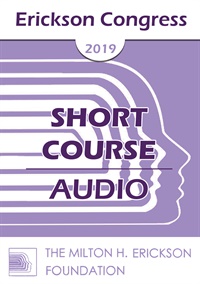
- Average Rating:
- Not yet rated
- Topic Areas:
- Short Courses | Hypnotherapy | Phobia | Hypnosis
- Categories:
- Erickson Congress | Erickson Congress 2019
- Faculty:
- Carlos Ramos, PhD
- Duration:
- 1 Hour 2 Minutes
- Format:
- Audio Only
- Original Program Date:
- Dec 12, 2019
- Short Description:
- The author of this research and presentation will explore how Douglas Flemons, the developer of relational hypnosis, facilitated an enduring non-volitional shift with a client, “Grace,” who desired to have a baby but could not see or talk about blood, needles, or medical procedures without fainting. Using context-enriched conversation analysis (CECA), the author will describe how he embraced his understanding of Ericksonian and Neo-Ericksonian hypnosis methods as a guide to examine multiple sources of data, which included selected audio-recorded excerpts from Douglas and Grace’s hypnotherapeutic sessions; Grace’s descriptions of change in her email correspondence with Douglas; and Douglas’s case notes.
- Price:
- $15.00 - Base Price
Tags: Hypnosis Hypnotherapy Phobias
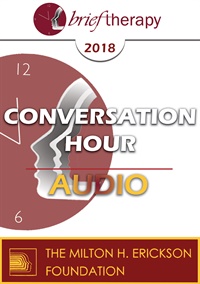
- Average Rating:
- Not yet rated
- Topic Areas:
- Great Conversations | Phobia | Brief Therapy
- Categories:
- Brief Therapy Conference | Brief Therapy Conference 2018
- Faculty:
- Robert Dilts, BA | Jeffrey Zeig, PhD
- Duration:
- 59:18
- Format:
- Audio Only
- Original Program Date:
- Dec 08, 2018
- Short Description:
- Technical and theoretical approaches to working with phobias will be described from complementary perspectives.
- Price:
- $15.00 - Base Price
Tags: Brief Therapy Phobias
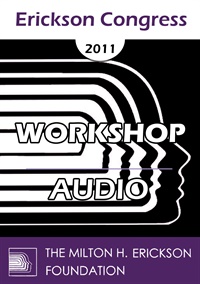
- Average Rating:
- Not yet rated
- Topic Areas:
- Hypnosis | Workshops | Self-Hypnosis | Phobia | Panic
- Categories:
- Erickson Congress | Erickson Congress 2011
- Faculty:
- Bernhard Trenkle, Dipl. Psych
- Duration:
- 59 Minutes
- Format:
- Audio Only
- Original Program Date:
- Dec 07, 2011
- Short Description:
- This workshop describes the use of hypnosis and self-hypnosis for treating phobias and panic disorders. The patient is learning a technique via which he can treat the problem him/herself. Building hope and diminishing helplessness is essential for a successful therapy and the workshop will address different possibilities to achieve this. The workshop is explaining the self-treatment technique via case examples. Homework assignments, pattern disruption, systemic considerations and stabilizing the treatment results are further topics.
- Price:
- $20.00 - Base Price
Tags: Hypnosis Panic Self-Hypnosis Phobias
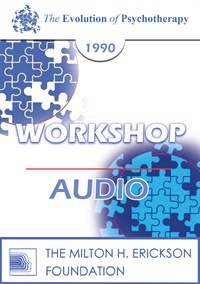
- Average Rating:
- Not yet rated
- Topic Areas:
- Workshops | Anxiety | Phobia | Panic | Psychotherapy
- Categories:
- Evolution of Psychotherapy | Evolution of Psychotherapy 1990
- Faculty:
- Joseph Wolpe, M.D.
- Duration:
- 3 Hours 35 Minutes
- Format:
- Audio Only
- Original Program Date:
- Dec 13, 1990
- Short Description:
- Social anxieties are the most common constituent of neuroses. Their different dynamics in a spectrum of cases will be described, and their role in agoraphobia and panic disorder will be presented. It will be seen how treatments, dictated by dynamics revealed in case analyses, are correspondingly successful.
- Price:
- $15.00 - Base Price
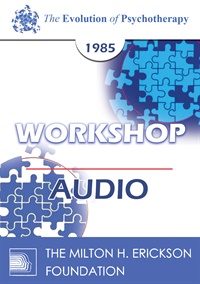
- Average Rating:
- Not yet rated
- Topic Areas:
- Workshops | Transactional Analysis | Borderline | Depression | Phobia | Psychotherapy
- Categories:
- Evolution of Psychotherapy | Evolution of Psychotherapy 1985
- Faculty:
- Mary Goulding, MSW
- Duration:
- 2 Hours 38 Minutes
- Format:
- Audio Only
- Original Program Date:
- Dec 14, 1985
- Short Description:
- This workshop will address specific problems: phobias, depression, uses of T.A. with borderline clients, and addictions. Presentation and discussion.
- Price:
- $15.00 - Base Price
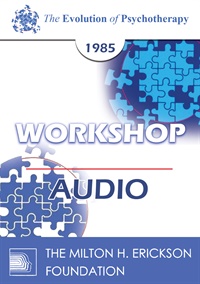
- Average Rating:
- Not yet rated
- Topic Areas:
- Workshops | Anxiety | Cognitive Behavior Therapy (CBT) | Panic | Psychotherapy | Phobia
- Categories:
- Evolution of Psychotherapy | Evolution of Psychotherapy 1985
- Faculty:
- Aaron Beck, MD | Stowe Hausner, PhD
- Duration:
- 2 Hours 52 Minutes
- Format:
- Audio Only
- Original Program Date:
- Dec 12, 1985
- Short Description:
- The Cognitive Model of anxiety as applied to acute and chronic anxiety, post-traumatic disorders, agoraphobias, panic disorders and simple phobias will be presented. Cognitive-behavioral strategies include identification and evaulation of dysfunctional cognition, induced imagery, induced panic attacks, and cognitive monitoring of exposure treatment. A videotaped demonstration of the treatment of panic disorders will be shown.
- Price:
- $15.00 - Base Price
Please wait ...


